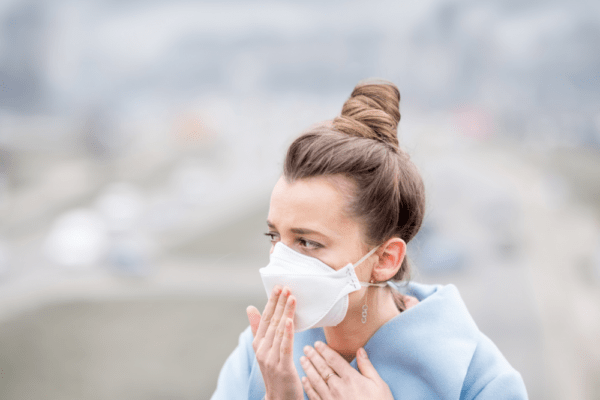Exposure to air pollution makes a person more susceptible to various pulmonary and cardiovascular diseases. According to many health experts, microscopic particles floating in the air can be hazardous elements and is adding to the growing number of tuberculosis cases. Air is deemed to be polluted when it contains high levels of particulate matter smaller than 10 microns and 2.5 microns. India alone has 3.8 million people suffering from the condition.
Tuberculosis is estimated to afflict approximately 8-10 million people and to cause 1.5 million deaths each year worldwide. The incidence of the disease is particularly high in low- and middle-income countries that are experiencing rapid industrial growth and increases in motor vehicle traffic in densely populated urban areas.
Symptoms of Tuberculosis
Usually you’ll need a skin or blood test to find out if you have tuberculosis. But there are some common signs that could indicate potential threat. They include:
- Cough that lasts 2-3 weeks
- Coughing up blood
- Persistent fatigue
- Chest pain or pain while coughing or breathing
- Loss of appetite and weight loss
- Chills and night sweats
Tuberculosis can likewise affect other parts of the body, including your kidneys, spine or brain.
TB and indoor air pollution
Tuberculosis (TB) is an infectious bacterial disease that mainly affects your lungs. One of the major factors that affect TB is poor air quality. Research has documented positive connections between air pollutants and the development of tuberculosis. A 2014 study published in the International Journal of Tuberculosis and Lung Disease showed that indoor air pollution was associated with TB, especially in developing countries. Indoor air pollution is largely produced by the cooking fuels which can lead to chronic respiratory diseases. The study concurs that women are more likely to develop such condition including tuberculosis.
Furthermore, indoor biomass pollution due to the harmful particles is greater and more harmful than that found in the most contaminated of cities.
The pollution occurring within the walls of your house can make you susceptible to a wide range of health issues. The health effects are seen more in developing countries which includes chronic obstructive pulmonary disease, blindness, lung cancer and tuberculosis (TB). These are seen in people above 15 years of age, with acute lower respiratory infections observed in children below 5.
While tuberculosis is largely caused by Mycobacterium tuberculosis bacteria, there are other hazardous factors as well. Multiple studies report the damage caused by exposure to indoor biomass pollution in homes which could lead to pulmonary tuberculosis, the most common airborne transmitted infection.
A study published in a journal Cell, describes the relationship between indoor pollution and TB. Lalita Ramakrishan, from the department of Medicine at the University of Cambridge in the United Kingdom explains, “Macrophages are the first line of defence when a bacteria enters the lung. Macrophage – or “big eater” in Greek – is a type of white blood cell that engulfs the bacteria and digests it and is often successful in stopping TB infection in the lungs.” Macrophage are good at killing bacteria. However, when your lungs are filled with smog or other harmful matter, they clog the macrophages and reduce their chances to digest bacteria. “The clogged macrophages are not able to kill the TB bacteria effectively, leaving them to multiply and let the infection turn into a full-blown disease like tuberculosis.”
To keep yourself save from developing such a condition, indulge in TB control practices to improve indoor air quality.




